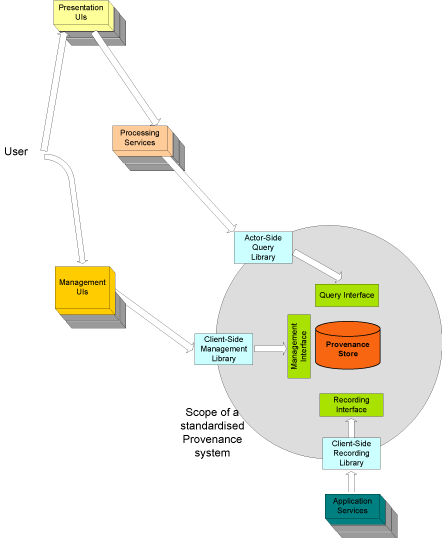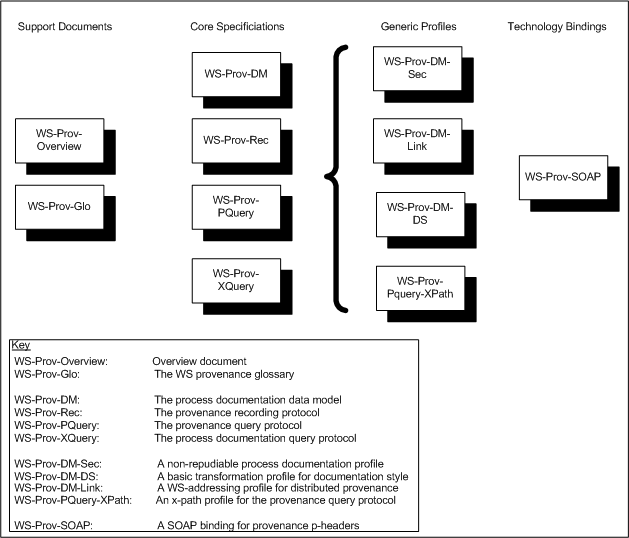The Open Provenance Specification
Welcome to the Open Provenance Specification Page. Here we present a family of specification documents that describe in detail the data model for provenance.
The Open Provenance Specification activity of the EU Provenance Project was a significant effort to produce a family of documents that support a standardisation proposal for provenance. Several foci for standardisation are possible, but the project decided that the key focus should be on specifying the underlying data model for provenance and the core interfaces that allow users to interact with such a system. In Figure 1, a circle identifies the scope of the specification. It includes the provenance store, its interfaces, and the libraries to interact with them.

Figure 1: The scope of the specification effort.
In order to fulfill the standardisation commitments, the project produced a family of Open Specification documents that describe a framework for computational provenance; a set of nine technical specifications that define the normative description of the provenance framework in terms of a SOA model and related XML definitions.
These technical specifications, summarised in Figure 2, define the means by which:
-
a computational representation of process documentation can be realised;
process documentation can be recorded;
process documentation can be queried;
-
the recording and querying of process documentation can be made secure;
-
process documentation can be recorded in distributed systems.
The family of documents comprise a set of 2 support documents, four documents
that introduce and specify the core framework, four generic profiles that
extend the basic framework and one example of a technology specific binding.

Figure 2: The family of the open specification documents.
